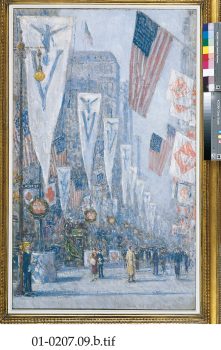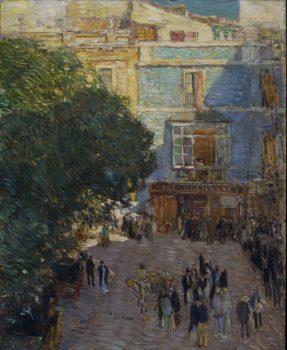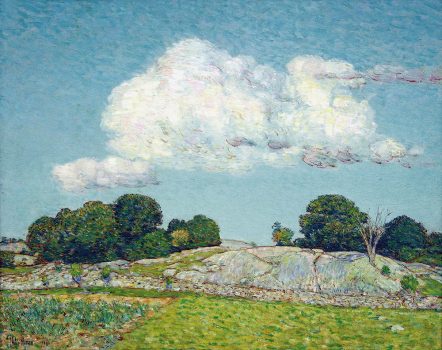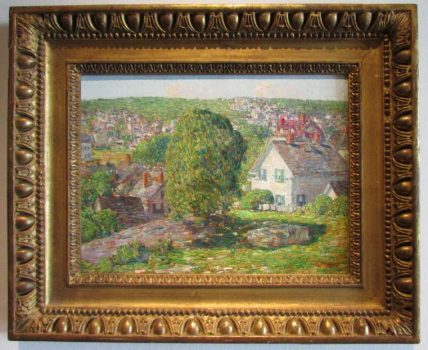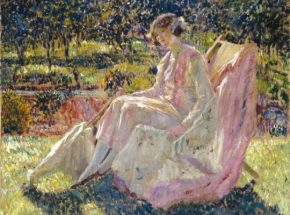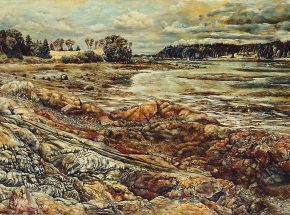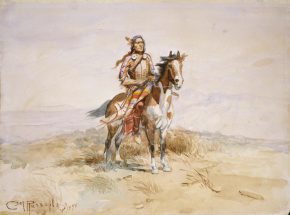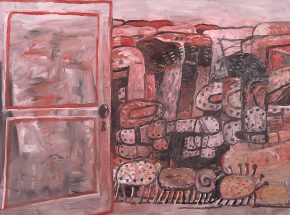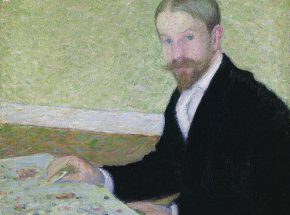
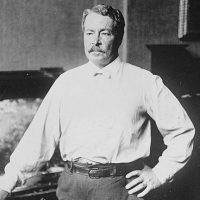
While Childe Hassam’s most famous series of artworks remains his flag paintings created during World War I, throughout his career, he increasingly focused on the landscapes of New Hampshire and Maine. Hassam captured light-filled afternoon scenes using his characteristically vibrant palette and dynamic brushwork.
In the late nineteenth century, Hassam and fellow artists John Henry Twachtman and J. Alden Weir faced opposition from the Society of American Artists toward their choice to paint in an impressionist style. Beginning in 1903, Hassam also participated in Connecticut’s Old Lyme Art Colony; his presence influenced group members to shift away from tonalism and adopt elements of impressionism.
Source: Museum of Fine Arts, Houston
